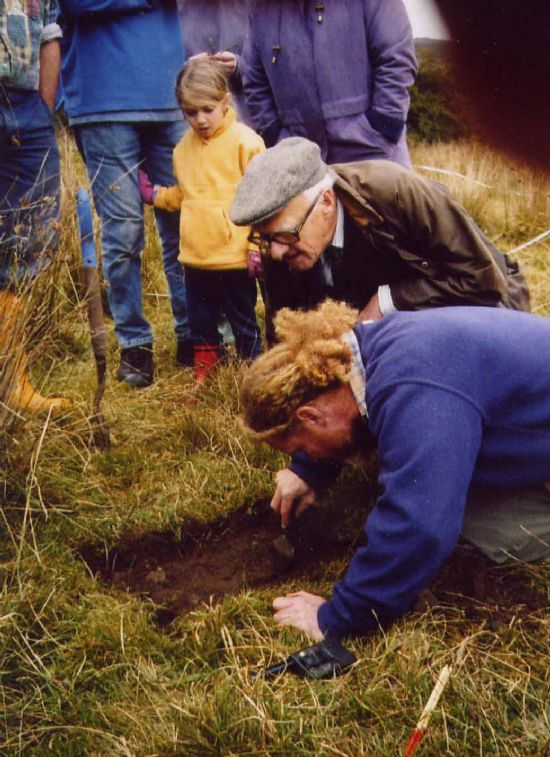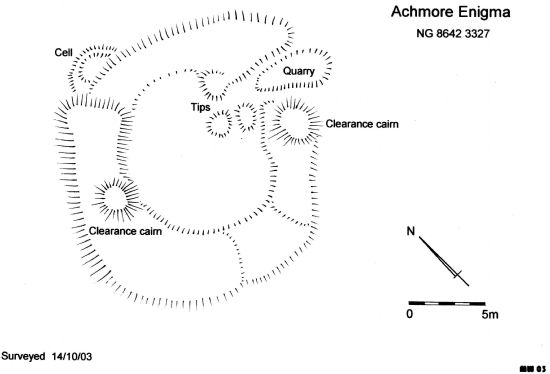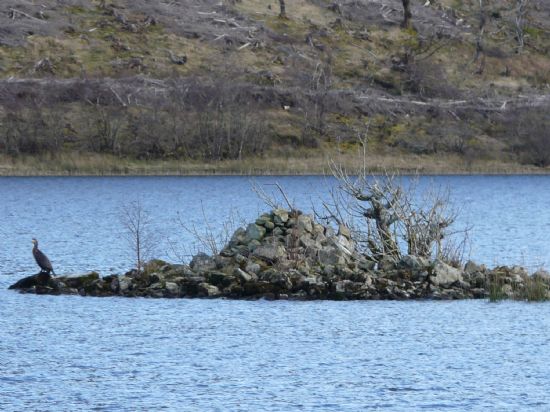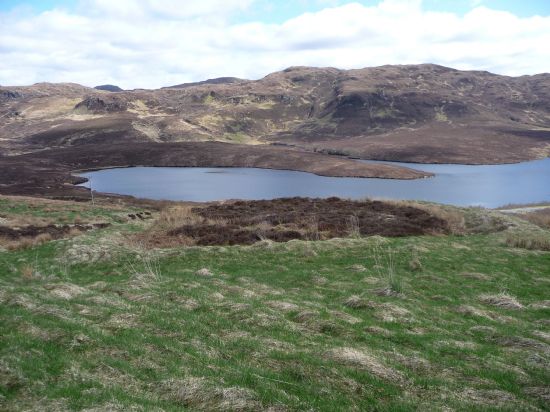Pre History
Srath Ascaig is a fertile and sheltered area of land which is an obvious place for settlement, and it is likely that was one of the earliest places in Lochalsh to be inhabited. There is however, very little known evidence of this.
All the following sites are on private property (except the fort at Ach na h-Inich which is on Forestry Commission land), so please respect this and avoid causing any disturbance or damage if you visit.
Neolithic Relics
.jpg)
The stony mound in the middle of the strath up the glen (NG876330), is a megalithic chambered cairn, probably built during the Neolithic period, between 2000 and 5000 BC. There was an archaelogical dig carried out here in the 1890's. The cairn was damaged more recently with stone being removed.
.jpg)
The mound (NG855332) in the field at Achmore bridge may also be a chambered cairn, and may incorporate some (buried) standing stones. It is probable that there has been more recent activity which has added to the picture, and it may be associated with a fifteenth century battle. There is also a local story that a Spanish ship’s crew died of a plague, and were buried there. It is marked on the 1st ed OS map as Grave Yard (disused).
The Bronze Age

The circular rise in the Round Park (NG864333), (surveyed in October 2003 as “the Achmore Enigma”) is thought to be the remains of a bronze age (500 to 2000 BC) round house. This was a large building, about 16 metres in diameter, housing several families or a large extended family. It would have had a stone wall with a timber roof, constructed like a teepee. Many sites of this age are in positions such as this, where it would appear to be poorly defended, with the over-looking hill. It can only be concluded that there was little danger of attack.

The site in the Round Park has probably also been a dump for stones cleared from the field, which have confused the outline a bit.
The Iron Age
During the bronze age the climate deteriorated, partly due to volcanic activity in Iceland, which shed a lot of ash over Scotland. The peat advanced, and favoured higher ground became less usable, and people began to settle more in the strath. They also built smaller houses, as large timber became less available, due to the woodland reduction that came with climate change. These later, smaller, iron age (500 BC to 500 AD) huts led to the break up of the communal living of several families. It is this type of building that the local Youth Club have reconstucted in Strome Wood. There is a site in the birchwood across the road from Strome Wood that may be the remains of one of these buildings.
Iron Age Fort at Achaidh na h-Inich There are the remains of an iron age vitrified fort at Carn na Sean Creag (Old Rock), by the forest road at the upper end of Loch Achaidh na h-Inich.
 Crannog in Loch Achaidh na h-Inich The island in the loch is said to have been a fortified dwelling, used by the Lochalsh MacDonalds before they were driven out by the MacKenzies.
Crannog in Loch Achaidh na h-Inich The island in the loch is said to have been a fortified dwelling, used by the Lochalsh MacDonalds before they were driven out by the MacKenzies.

Glen Udalain Recorded on the Ordinance Survey map as a tumulus, there is a circular earthwork, about 27 metres in diameter, a little above the old road to the north west of the dam loch in Glen Udalain. It is probably an iron age defended farmstead, and not a tumulus (burial mound). There are also other nearby features, including two small hut circles to the north east, and some stone remains, possibly a sheiling hut.